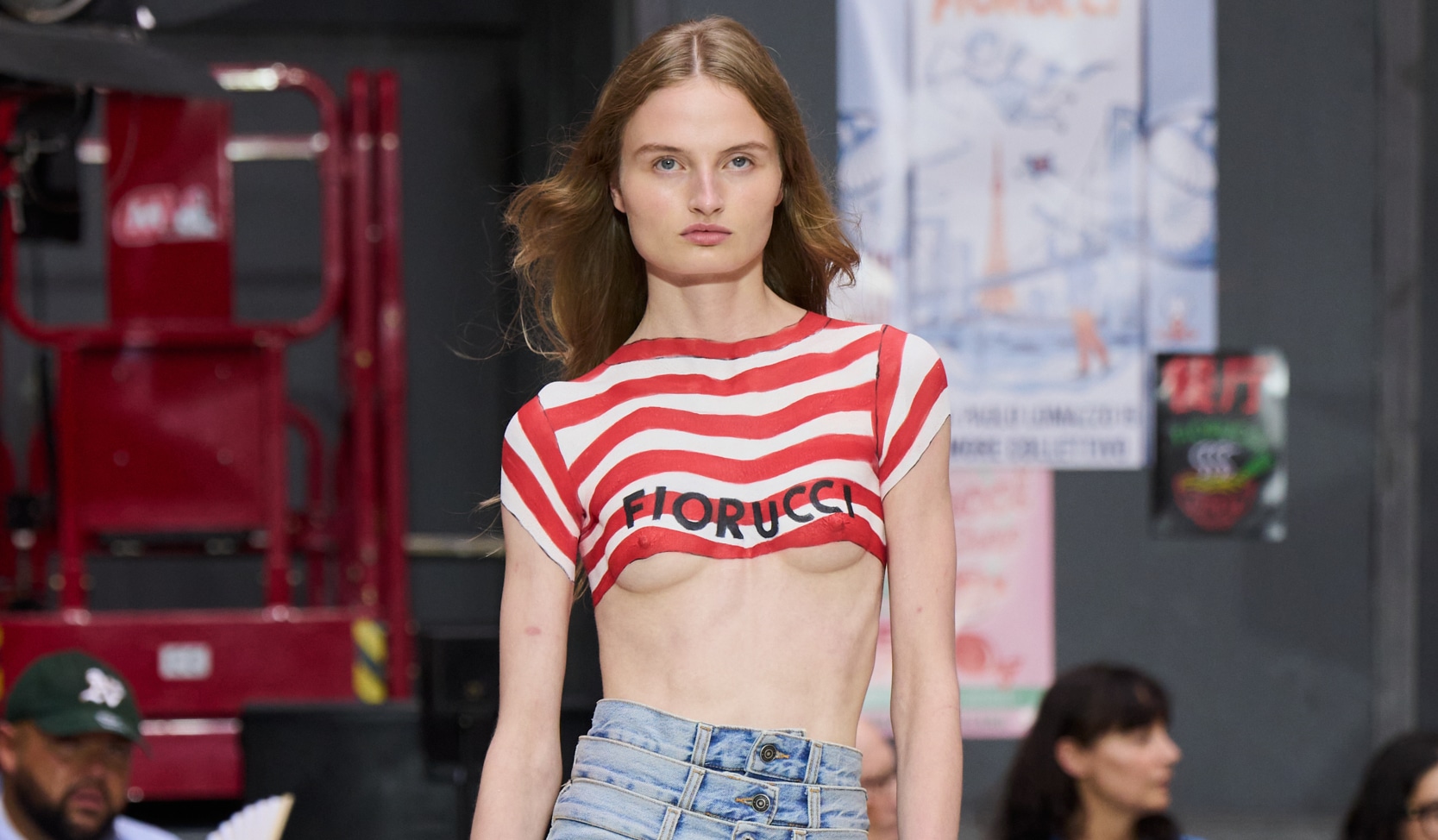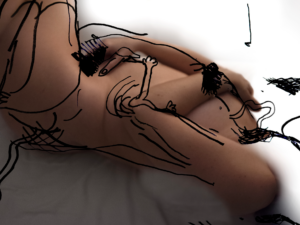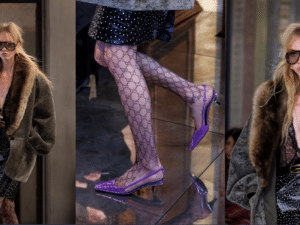A look back at ways in which fashion has become a means of protest and demonstration.
Political Dressing: 5 Ways Fashion Made A Statement
Visual signifiers and codes such as a haircut or a particular accessory can easily determine the type of person you are or want to be including your sexual preference, your social-demographic, and also your political views. Fashion can be a powerful language. In today’s current climate that has seen the rise and thankful progression of the #BlackLivesMatter movement, the potential re-election of Trump, and the current COVID-19 pandemic; what we wear is as important as what we say. In an age ruled by Instagram, one strong visual can mean a global and profound effect on the rest of the world.
We have entered a world where political and social tensions now drive fashion and it’s position as a statement tool. Choosing what to wear today is not just about style. From the Gilets Jaunes protestors of Paris to US congresswoman Alexandria Ocasio-Cortez in a white power suit, fashion is a fascinating and enchanting reflection of our times in steering popular culture and the driving social trends. You have a choice and can choose the armor you wear and the team you wish to fight for. Pick wisely.
We’ve compiled a list of fashion moments that have had multiple modes of expression throughout history and given cause for change.
It All Began With The Incroyables And Merveilleuses
The original punks and rebels with a cause. During the 1790s, after the French Revolution, a new type of 18th-century youth emerged in Paris. Their fashion was extreme, decadent, and over-the-top just like their personalities. Borne from the pitting against the working/middle class vs. the wealthy, these were the political youths who made their statement by dressing up in the most daring fashions that looked to mock the luxury styles worn in the court of King Louis XVI (1754-1793), who had been recently beheaded.
Though many found the style to be extreme and unsightly, it did give the spectators a chance to reminisce of a time when outlandish fashion was more than just a jest. Their protest was to dress up and stand out from the norm. Incroyables and Merveilleuses have been a reference point for many fashion designers from John Gallianos CSM graduate collection to Rei Kawakubos’ Comme Des Garcons Fall ’16 show, their spirit for anarchy lives on through dress .
The Suffragettes Dress Like Ladies
The women of the early 1900s had a big uphill battle for the right to vote and rightfully won that vote which has affected the lives of people many after and generations to come. Prior to the monumental moment, the media-savvy women’s suffrage movement wanted to deter from their press accusations of eccentricity and spinster masculinity. Instead, the women chose to opt for more traditional Edwardian clothing which was in line with the traditional ideals of femininity, even if they conspiring and engaging in unladylike activities.
The Women’s Social and Political Union (WSPU) chose three colors to represent the ladies: purple was seen to represent loyalty and dignity, white for purity and green for hope (in the USA green was replaced with gold to represent the sunflowers of Kansas where campaigners Susan B. Anthony and Elizabeth Cady Stanton were lived), were worn “as a duty and a privilege” and were applied to a range of clothing.
A Slogan T-Shirt Tells a Thousand Words
A practical piece of clothing that can be worn by all genders, cultures, and backgrounds the simple slogan t-shirt has been able to tell people what you’re thinking for many years. Originally, the first slogan t-shirts were sold by Mr. Freedom down London’s Kings Road, who’s Disney designs included Mickey Mouse and Donald Duck. It was punk anarchist designer Vivienne Westwood and her partner, Malcolm McLaren, in the 70s that made it available to the masses by making political T-shirts to sell in their shop, SEX. The most popular design featured a swastika and an inverted crucifix under the word “Destroy”, it was declared by McLaren to be “the ultimate punk t-shirt”.
The subversive power of the slogan t-shirt was not lost in the 80s either. Katherine Hamnett caused a wave of sensation with her political slogans in bold type. Her ‘Choose Life’ t-shirts were ever popular throughout the decade but it was her meeting with then Prime Minister Margaret Thatcher that caused the most controversy. After sneaking a t-shirt into No.10, Hamnett shook hands with Thatcher wearing the T-shirt “58% DON’T WANT PERSHING”, referencing polls that showed public opposition in the United Kingdom against the basing of Pershing missiles in the country . The image was front-page news and brought widespread attention to the Campaign for Nuclear Disarmament cause
Fashion designers have been able to convey there own views of what they believe via t-shirts. Dior’s creative director Maria Grazia Chiuri, first runway show with the house was scattered with a powerful statement, quoting Chimamanda Ngozi Adiche’s now seminal ‘We Should All Be Feminists’ essay on a t-shirt. Though at 500 EUR, it would be difficult for us all to be feminists with that price tag.
Women’s March & Planned Parenthood
The 2017 Women’s March, in which a worldwide protest ensued, became the largest single-day protest in US history. The Pussyhat Project was a nationwide effort to create a mass of hats for march-goers and create an effect on the protest. Many women wore pink knitted hats across America after the inauguration of President Trump. The motive of creating the ‘pussyhats’ was to reclaim the word pussy as it had been used in a derogatory way by the president, the hats were a symbol of feminine power during the protests. Missoni’s Fall / Winter 2017 show later featured a colorful ribbed knit stripe.
Fashion continued to be a symbol of opposition against the Trump administration. The supporters of Planned Parenthood protested anti-abortion laws legislations wearing red capes and white bonnets replicating the costumes described in the dystopian novel The Handmaid’s Tale by Margaret Atwood. A sign that even non-fiction can become a reality in these unpredictable times.
The Yellow Vests Movement
In France, social justice and democracy were symbolized by a united uniform of protestors all dressed in their “gilet jaunes”. Originally starting in 2018, the movement spiked and became a national outcry due to the rising prices of gas, housing costs, and the inequalities between the rich and poor under the leadership of President Emmanuel Macron.
The fluorescent yellow jacket is associated with working-class industries, for example, construction work. All French motorists already own a jacket similar due to law which was passed back in 2008 requiring car owners to keep a high-visibility garment in their vehicle in case of problems. This type of uniform is inexpensive, accessible, and represents distress in the nature of wearing it. A perfect garment that is fitting to the movement that is rooted in labor reform.
Text: Sam Kavanagh



